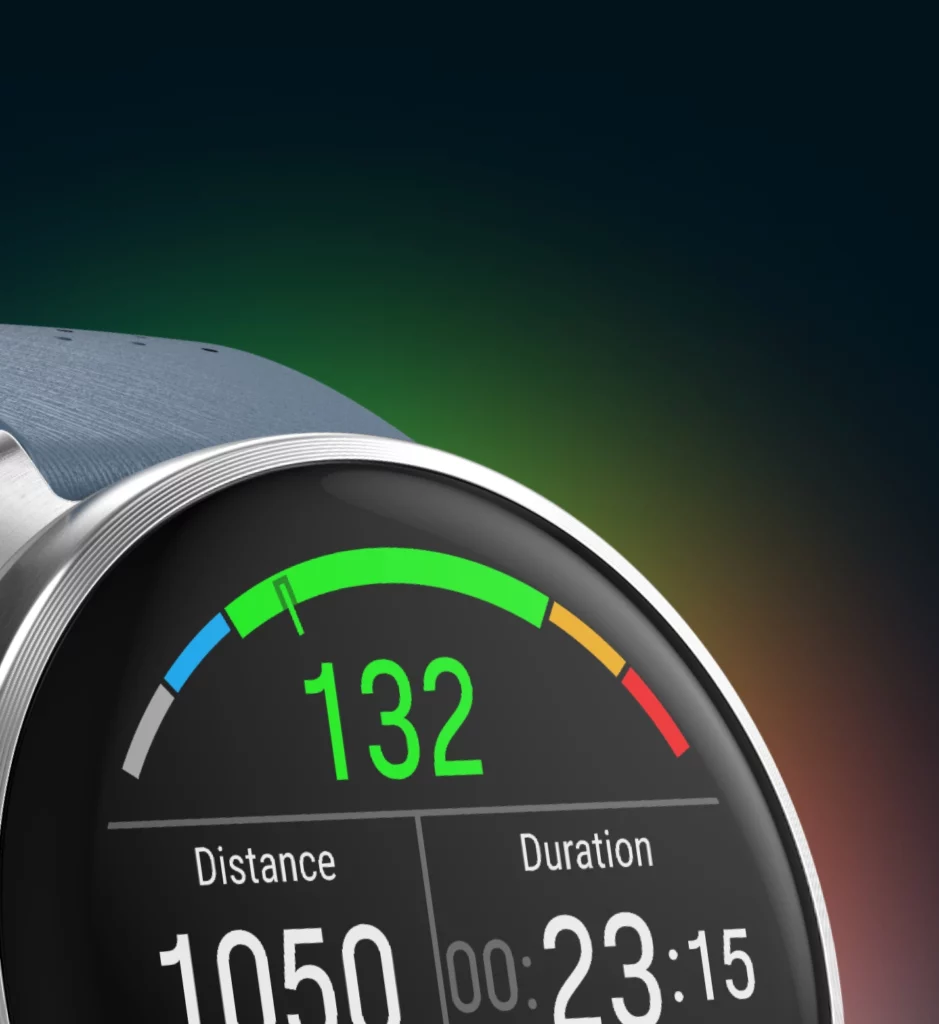Polar goes for broke with the new Vantage V3
The latest multisport watch from Polar features a stunning display and new biosensor technology
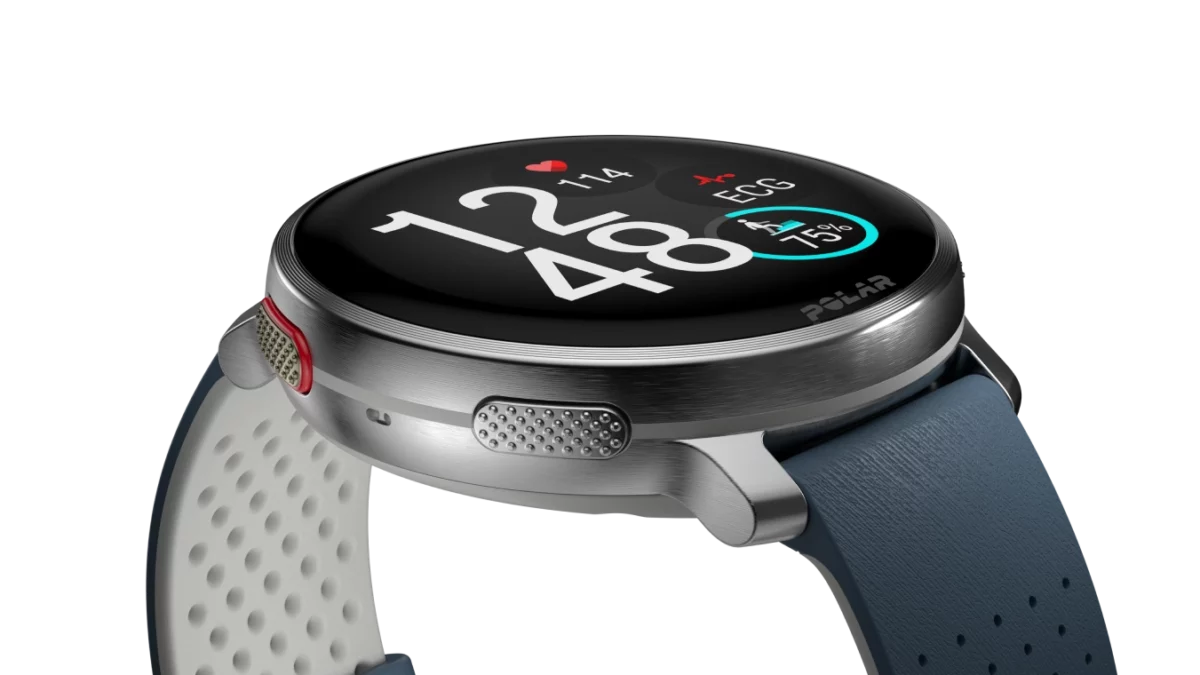
Over the last couple of years Apple has surged into the endurance and multisport watch world with the Ultra and Ultra 2, while Garmin has been pushing hard to stay at the top of the GPS watch game with a never-ending line up of top-end multisport, running and adventure options. Polar, the Finish company that pioneered wearable fitness technology almost 50 years ago, has long been a leader in the wearable sports market, but hasn’t been as active on the new-watch front over the last few years. Sure, we’ve seen some excellent watches like the Vantage V2 (2020) and the Vantage M2 and Ignite 2 (2021), but as Apple and Garmin kept raising the bar, we haven’t seen much that really felt like the company was taking on the other major players on the flagship/ high-end front. While, a decade ago we were used to less frequent new watch releases, now that Apple is firmly in the game and apparently going to launch a new watch every year, companies that want to compete for a share of the multisport watch market are likely going to have to up their game.
Which is exactly what we’re seeing with the arrival of Polar’s latest premium multisport watch – the Vantage V3. With a spectacular AMOLED screen, enhanced body measurement capabilities and extensive mapping options, this latest offering from Polar has some great features that make it a more than viable option for serious triathletes, especially those who are fans of the Polar platform. That said, with a hefty price tag of US$600/ CAD$880, as good as this watch is, unless there are some exciting updates that unleash more features, at this point it’s going to be tough to convince Garmin or Apple users that they want to make the switch to the Vantage V3.
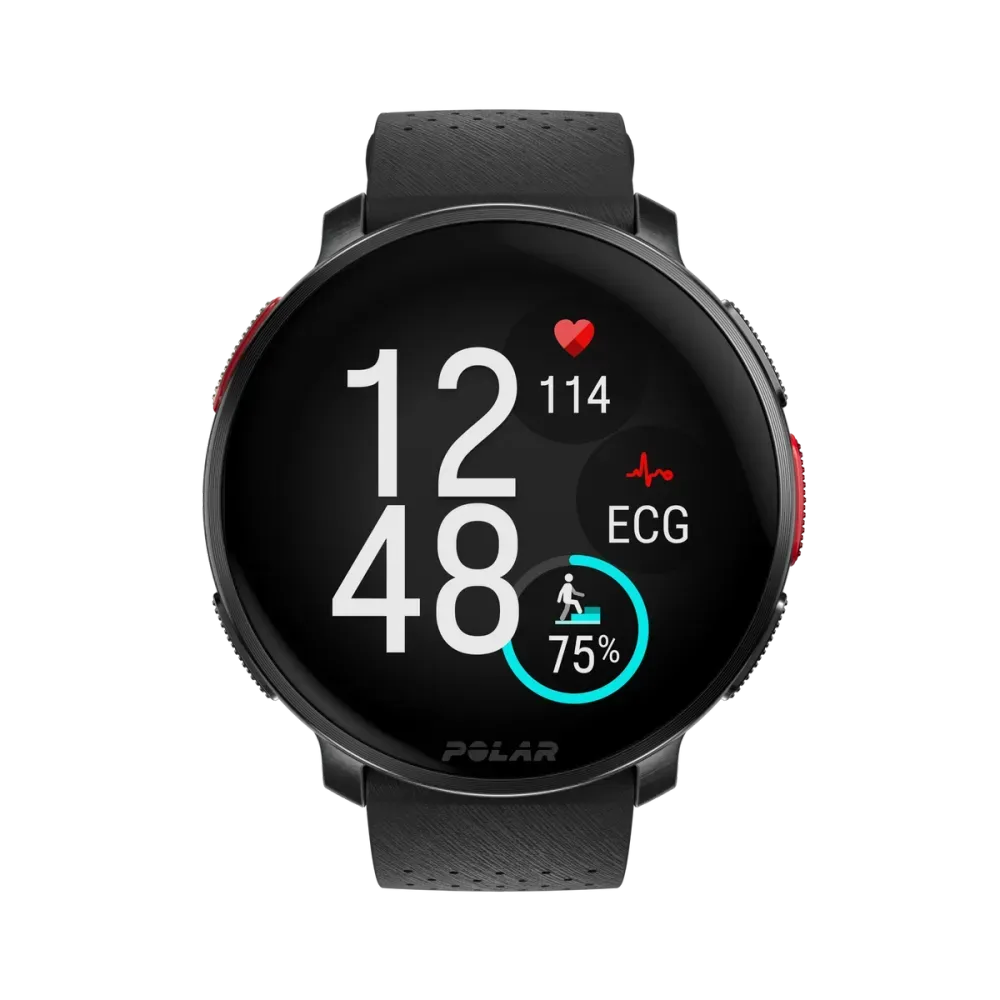
Design features
Polar has done an excellent job with the design of the Vantage V3. The 1.39 inch AMOLED touchscreen is beautiful, providing exceptionally clear viewing of sports and everyday activities. While even in “always on” mode the screen goes dark when you’re not looking at it, simply twisting your wrist immediately brings everything into view in bright, crisp clarity – it’s no-doubt a feature that allowed the Polar engineers to eek out a bit more battery life. We’ll have more on maps later, but the screen is great for viewing those. There’s a stylish aluminum bezel around the Gorilla Glass touch-screen, along with five buttons around the watch for those who are more comfortable navigating around the controls with those rather than touching the screen – always a boon for those times you’re doing a swim workout, wearing gloves or working out in the snow or the rain
Completing the “good looks” features of the Vantage 3, there are three different colour options – Night Black, Sky Blue and Sunshine Apricot – with 22 mm standard wristband. At just 57 g the Vantage V3 feels really light on your wrist, and while it does have a decent sized screen, it doesn’t look ungainly on smaller wrists.
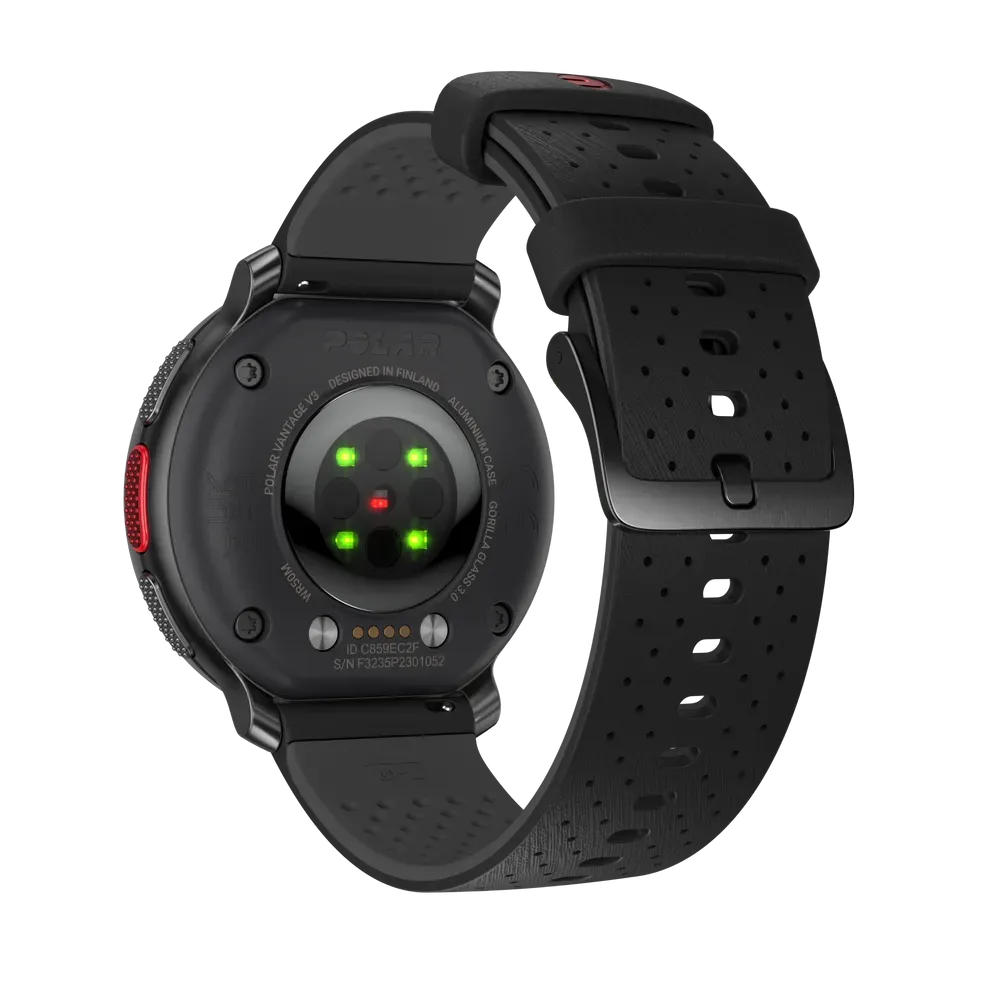
Polar Elixir
Polar really got the world of heart rate monitors off and rolling in this industry, so it comes as no surprise that the company would be working hard to be innovative on the sensor front in the Vantage 3. Polar’s Elixir technology provides precise optical heart rate measurement that’s designed to minimize light leakage and improve power efficiency to provide more accuracy. The sensors can also measure blood oxygen saturation and there’s a built-in wrist ECG sensor, too. The Vantage V3 can also detect skin temperature, something that can be useful when it comes to overall health measurements and, for women, can provide some insights of the specific stages of their menstrual cycle.
Those features are pretty much all available in the high-end Garmin and Apple Watches, and during our review we really didn’t notice any difference between the heart rate accuracy of the Vantage V3. There might have been a little less dropping out than we’ve experienced with the Apple Watch Ultra 2, but it certainly wasn’t a dramatic difference.
Polar has a great track record of building on the features of its watches, though, so future software updates could enhance all of these features.
Training Capabilities
Polar’s multisport offerings have always provided excellent tracking capabilities for swimming, biking, running and triathlon activities, and for those who participate in other activities, there are 150 built-in sports profiles in total. When it is time to get active the Vantage 3 is a breeze to set up thanks to an extremely easy to use interface that will get you off and rolling with a few swipes or button presses. You can customize the various screens for your activities, but you are limited to a maximum of four data fields per page. That’s probably enough, but with the competition offering at least the option to add more than four data fields, Polar would do well to at least add that ability.
Syncing a power meter was a breeze so we could add power measurement to our bike sessions, and one would imagine adding a heart rate strap would be equally as easy – as noted earlier, we found the wrist sensor to be more than adequate for our HR measuring needs.
Polar claims that you can get up to 140 hours of training in power saving mode, with up to eight full days of display time. We never utilized the power saving mode and noticed considerably less time than that for our training and daily needs. With one or two workouts a day we quickly drained the battery in three or four days. That’s still a lot more than you’ll get with Apple’s Ultra or Ultra 2, but that AMOLED screen means you’re not going weeks between charges as some of the watches out there that don’t utilize that technology will offer.
One area that the Vantage V3 really excels is with maps. The watch comes preloaded with basic North American and European maps, and you can utilize some of the 32 gigabytes of storage to download detailed maps of various regions around the world. Unfortunately you can’t do that from the phone app – you need to connect your phone to a computer. The process isn’t exactly cut and dry with a Mac, but is pretty simple with a PC.
It’s easy to assess your fitness through the included Running and Cycling Performance tests which help you estimate your VO2 Max and threshold values for power and heart rate. After about a week of use the watch can really start to monitor your recovery and current condition, allowing you to figure out what you should be doing training-wise based on your level of fatigue. During sleep the Vantage V3 uses a number of sleep-tracking tools to give you data on just how well you’re recovering, too. All the data transfers to the Polar Flow App and website so you can monitor all that data, too.
Smartwatch Features
While the Vantage V3 is really geared to be a sports watch, it also offers some smartwatch features. There are a variety of different face options and you can customize the screens. While you can’t listen to music from the device, you can control your tunes from the watch. A quick swipe upwards will get you to notifications from your phone including texts and the like and, of course, as you wear the watch more and more it can help with sleep and recovery information and also provide some insight what training you should be doing based on long-term data collection. There’s a new flashlight feature that’s easy to set up for quick access, too. Bottom line is this is a watch that is worthwhile wearing a good portion of the time and will quickly become a welcome addition to your tech arsenal.
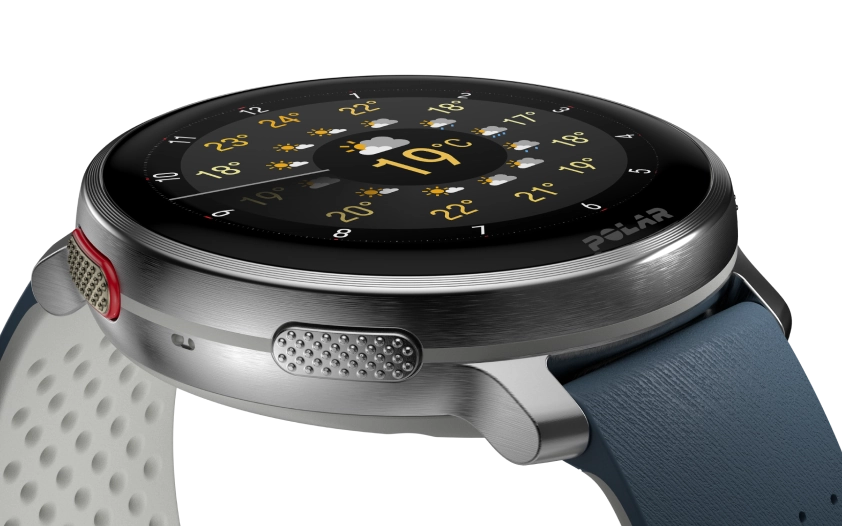
Conclusion
Polar has definitely upped its game with the Vantage V3. It’s stylish to wear and has exactly what you need to be able to gauge and track your training and recovery. The screen is gorgeous and easy to read, and the mapping features are excellent. It also offers the health features that are now becoming an expectation for high-end GPS watches these days. While the Vantage V3 doesn’t have the ability to store music as many of its competitors might, for most triathletes that’s hardly going to be an issue – if they do want to listen to music, they can use their phones.
The bottom line is that the Polar Vantage V3 is an excellent sports watch. Long-time Polar fans who have been loading data on to the excellent Polar Flow platform for years will be happy to jump on this option as a high-end watch.
It’s hard to imagine, though, that there’s enough in the Vantage V3 to steal any Garmin fans, or first-time users who see all their friends with Garmin watches on their wrists, to move on over to the Polar universe. Especially since, in Canada, they can purchase Garmin’s 965, with its own beautiful AMOLED screen, longer battery life and music capabilities for $70 less. (The Vantage V3 and the 965 share the same US$600 price tag south of the border.) Athletes with iPhones who are looking for a smartwatch that serves as a high-end training tool now have the Ultra 2 (CDN$1,099/ US$799), with even more smartwatch features including WiFi and cellular capabilities. My guess is many serious triathletes who are Apple fans will be happy to live with the added cost and a little less battery life to be able to enjoy the other benefits.
So, where does that put the Polar Vantage V3? That’s a tricky question. If you have fond memories of great Polar watch experiences, you’ll certainly find the Vantage V3 will continue that tradition. It’s almost a decade ago now, but the Polar V800 was a really good watch that got even better with some upgrades over the ensuing months, which made it a long-lasting, invaluable training tool for many. The Vantage V3 has the hardware, capabilities and looks to offer a similar experience – a watch that can help you improve and get the most out of yourself for years to come.
